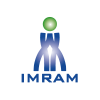
IMRAM
Institute of Multidisciplinary Research for Advanced Materials, Tohoku University
東北大学
多元物質科学研究所

LAST UPDATE 2023/08/01
-
研究者氏名
Researcher Name山﨑智之 Tomoyuki YAMASAKI
助教 Assistant Professor -
所属
Affiliation東北大学 多元物質科学研究所
金属資源プロセス研究センター 原子空間制御プロセス研究分野
Institute of Multidisciplinary Research for Advanced Materials, Tohoku University
Center of Mineral Processing and Metallurgy, Atomic Site Control in Inorganic Materials -
研究キーワード
Research Keywordsプロトン伝導体
ヒドリドイオン伝導体
水素吸蔵材料
Proton Conductor
Hydride Ion Conductor
Hydrogen Storage Alloy
- 研究テーマ
Research Subject -
固体中ヒドリドイオン伝導を用いた新規イオニクスデバイスの開発
Development of novel ionic devices using hydride ion conduction in solid
研究の背景 Background of the Research
水素は最も豊富な元素でありながら、材料中でカチオンとしてもアニオンとしてもふるまうことができる極めて特異な元素です。昨今期待されている水素社会の実現には、既存のエネルギーデバイスを凌駕する新規デバイス創製が必要不可欠であり、水素のユニークな特性を活かした機能性材料の開発がそのカギとなります。
Hydrogen is the most abundant element, but it is also an extremely unique element that can behave as both a cation and an anion in materials. The development of new devices that surpass existing energy devices is indispensable to realize the recently anticipated hydrogen society. To achieve this goal, it is important to develop functional materials that take advantage of hydrogen's unique properties.
研究の目標 Research Objective
水素の陰イオンであるヒドリドイオンが、全固体デバイス化に有利な乾燥雰囲気中でも高いイオン伝導度を示すことに着目し、ヒドリドイオン伝導を用いた新規電気化学デバイスや、メモリ素子の開発に挑戦しています。特に、このようなデバイス動作においてカギとなる、材料界面での理想的な水素移動を実現する水素イオン輸送材料を開発し、界面設計指針の提供を目指します。
Hydride ions, an anion of hydrogen, exhibit high ionic conductivity even in a dry atmosphere, which is advantageous for all-solid-state devices. My main objective is to develop novel electrochemical devices and memory devices using hydride ion conduction. To achieve these devices, I aim to develop hydrogen ion transport materials for ideal hydrogen transfer at interfaces and to provide guidelines for interface design.
研究図Figures

Fig.2. Correlation diagram of electronic energy level and hydrogen transfer barrier at interfaces.
論文発表 / Publications
ACS Appl. Mater. Interfaces 2022, 14, 17, 19766–19773. J.Am.Chem. Soc. 2023, 145,560−566.
研究者連絡先 / HP
- tomo.yamasaki
 tohoku.ac.jp
tohoku.ac.jp - http://www2.tagen.tohoku.ac.jp/lab/omata